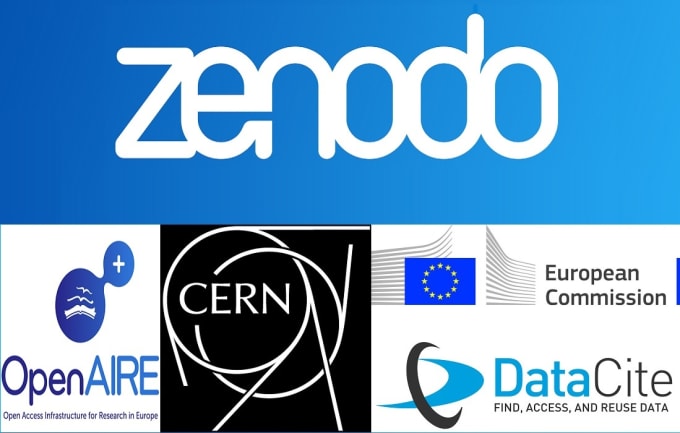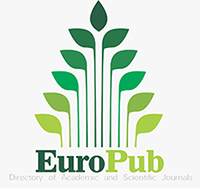Twelve years of experience using double-balloon enteroscopy for diagnosing and treating patients with obscure gastrointestinal bleeding
Enteroscopy in patients presenting with obscure gastrointestinal bleeding
DOI:
https://doi.org/10.5281/zenodo.10020937Keywords:
enteroscopy, double-balloon, anemia, iron deficiencyAbstract
Aim: Double-balloon enteroscopy (DBE) is a medical procedure employed for the assessment of small intestines that are inaccessible by standard endoscopes and colonoscopes. This study aimed to assess the data obtained from DBE procedures conducted to investigate the underlying causes of iron deficiency anemia and gastrointestinal bleeding when traditional diagnostic approaches were inconclusive.
Material and Methods: The present investigation is a retrospective study conducted at a single center. The medical data pertaining to DBE procedures conducted at the Gastroenterology Clinic of Ankara Türkiye Yüksek Ihtisas Training and Research Hospital was collected by the researchers for the period spanning from January 2007 to December 2018. The present investigation employed exclusion criteria to eliminate individuals with inadequate medical records and those who were transferred to another institution without a confirmed diagnosis.
Results: The study comprised a sample size of 118 individuals, with 45 (38.1%) being female and 73 (61.9%) being male. The average age of the participants was found to be 54.98 ± 16.1 years. A total of 88 patients received the procedure utilizing an anterograde (oral) method, while in 13 patients it was performed retrograde (anal). Additionally, 17 patients got the procedure utilizing both approaches. The observed lesions consisted of 18 (31.5%) inflammatory, 26 (45.6%) vascular, 9 (15.7%) neoplastic, and 4 (7%) diverticular kinds. Using double-balloon enteroscopy (DBE), it was found that 49.1% of the patients with obscure gastrointestinal bleeding (OGIB) had a positive result. A total of 22 instances (18.6%) necessitated the use of interventional techniques.
Conclusion: Consequently, the diagnostic efficacy of double-balloon enteroscopy in obscure gastrointestinal bleeding was very limited. The frequent location of the lesion varied depending on its nature; however, this variation did not yield a statistically significant difference when considering the presence of overt or occult bleeding.
Downloads
References
Patel A, Vedantam D, Poman DS, Motwani L, Asif N. Obscure Gastrointestinal Bleeding and Capsule Endoscopy: A Win-Win Situation or Not?. Cureus. 2022;14(7):e27137.
Morgan D, Upchurch B, Draganov P, et al. Spiral enteroscopy: prospective U.S. multicenter study in patients with small-bowel disorders. Gastrointest Endosc. 2010;72(5):992-998.
Yamamoto H, Sekine Y, Sato Y, et al. Total enteroscopy with a nonsurgical steerable double-balloon method. Gastrointest Endosc. 2001;53(2):216-220.
Lee SP, Jang HJ, Kae SH, Lee JG, Kwon JH. Indication, Location of the Lesion, Diagnostic Yield, and Therapeutic Yield of Double-Balloon Enteroscopy: Seventeen Years of Experience. Diagnostics (Basel). 2022;12(9):2224.
Alexander JA, Leighton JA. Capsule endoscopy and balloon-assisted endoscopy: competing or complementary technologies in the evaluation of small bowel disease?. Curr Opin Gastroenterol. 2009;25(5):433-437.
Mensink PB, Haringsma J, Kucharzik T, et al. Complications of double balloon enteroscopy: a multicenter survey. Endoscopy. 2007;39(7):613-615.
Pohl J, Delvaux M, Ell C, et al. European Society of Gastrointestinal Endoscopy (ESGE) Guidelines: flexible enteroscopy for diagnosis and treatment of small-bowel diseases. Endoscopy. 2008;40(7):609-618.
May A, Nachbar L, Pohl J, Ell C. Endoscopic interventions in the small bowel using double balloon enteroscopy: feasibility and limitations. Am J Gastroenterol. 2007;102(3):527-535.
Hong SN, Kim ER, Ye BD, et al. Indications, diagnostic yield, and complication rate of balloon-assisted enteroscopy (BAE) during the first decade of its use in Korea. Dig Endosc. 2016;28(4):443-449.
Choi H, Choi KY, Eun CS, et al. Korean experience with double balloon endoscopy: Korean Association for the Study of Intestinal Diseases multi-center study. Gastrointest Endosc. 2007;66(3 Suppl):S22-S25.
Jeon SR, Kim JO, Kim HG, et al. Changes over time in indications, diagnostic yield, and clinical effects of double-balloon enteroscopy. Clin Gastroenterol Hepatol. 2012;10(10):1152-1156.
García-Correa JJE, Ramírez-García JJ, García-Contreras LF, et al. Double-balloon enteroscopy: Indications, approaches, diagnostic and therapeutic yield, and safety. Early experience at a single center. Enteroscopia de doble balón: indicaciones, abordajes, eficacia diagnóstica y terapéutica y seguridad. Experiencia temprana de un solo centro. Rev Gastroenterol Mex (Engl Ed). 2018;83(1):31-40.
Liu K, Kaffes AJ. Review article: the diagnosis and investigation of obscure gastrointestinal bleeding. Aliment Pharmacol Ther. 2011;34(4):416-423.
Keum B, Chun HJ. Capsule endoscopy and double balloon enteroscopy for obscure gastrointestinal bleeding: which is better?. J Gastroenterol Hepatol. 2011;26(5):794-795.
Min YW, Kim JS, Jeon SW, et al. Long-term outcome of capsule endoscopy in obscure gastrointestinal bleeding: a nationwide analysis. Endoscopy. 2014;46(1):59-65.
Xin L, Liao Z, Jiang YP, Li ZS. Indications, detectability, positive findings, total enteroscopy, and complications of diagnostic double-balloon endoscopy: a systematic review of data over the first decade of use. Gastrointest Endosc. 2011;74(3):563-570.
Gerson LB, Tokar J, Chiorean M, et al. Complications associated with double balloon enteroscopy at nine US centers. Clin Gastroenterol Hepatol. 2009;7(11):1177-1182.e11823.
Möschler O, May AD, Müller MK, Ell C; DBE-Studiengruppe Deutschland. Ergebnisse des deutschen Registers für die Doppelballonenteroskopie [Complications in double-balloon-enteroscopy: results of the German DBE register]. Z Gastroenterol. 2008;46(3):266-270.
Baars JE, Theyventhiran R, Aepli P, Saxena P, Kaffes AJ. Double-balloon enteroscopy-assisted dilatation avoids surgery for small bowel strictures: A systematic review. World J Gastroenterol. 2017;23(45):8073-8081.
Chen WG, Shan GD, Zhang H, et al. Double-balloon enteroscopy in small bowel diseases: Eight years single-center experience in China. Medicine (Baltimore). 2016;95(42):e5104.
Downloads
Published
How to Cite
Issue
Section
License
Copyright (c) 2023 Chronicles of Precision Medical Researchers

This work is licensed under a Creative Commons Attribution-NonCommercial-ShareAlike 4.0 International License.





